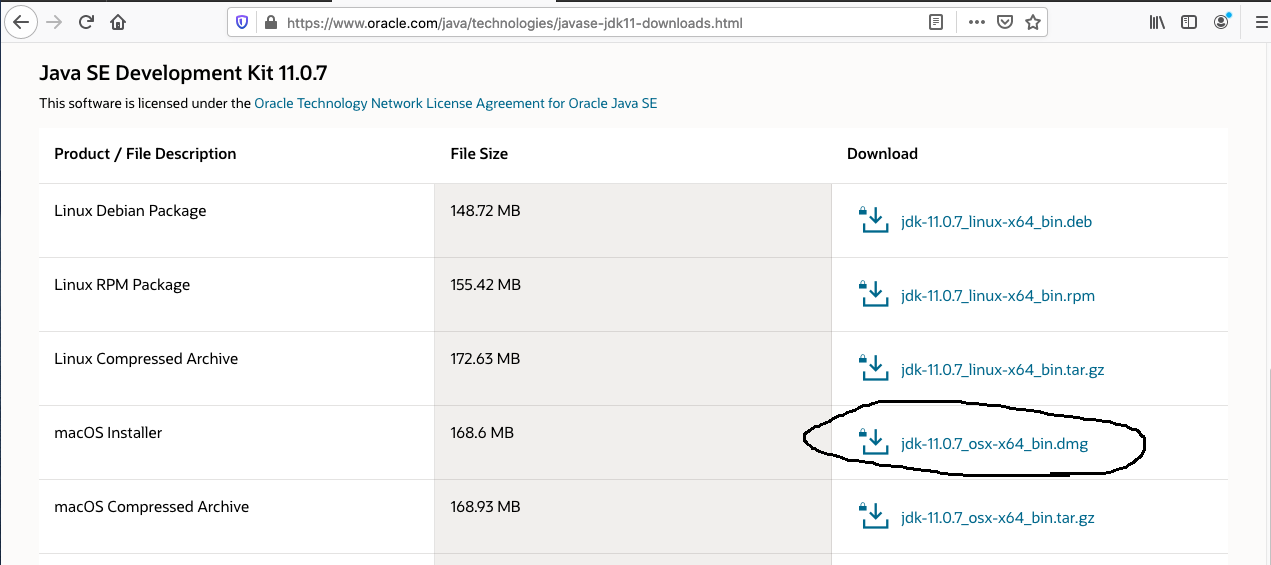

Now we installed the first thing, Java, and then we will install the Node JS and the rest of the necessary dependencies for Appium. Here, I have the Java JDK and the content is Java.įrom the command line, I will open the Library/Java/JavaVirtualMachines folder and here, I already have an existing version of Java, so I will drag and drop this version here and authenticate my account to be able to copy this folder.Īfter we moved the folder here, I have here two versions, and then I will open the profile ~/.zshrc for the command line to switch to version 11 if I already have a version in this file.īecause I already have a Java version in the profile, we should add export JAVA_HOME and then add the path for the JDK.īecause I already have an existing one, I will change it to version 11 or the version that I prefer to use, and then I will save the file.
INSTALL JAVA ON MAC OSX ARCHIVE
I will click on the Compressed Archive file, and then it will display the terms, and then I will log in to the Oracle website with my account to be able to download this file.Īfter I downloaded the file, I will double-click on this file to extract the file onto the desktop. Here, we can find the different versions and different operating systems for Java - I have here two versions or two types of files I can download - the DMG file or the Compressed Archive file. Here, we will find the different Java versions and the latest version is SE 15, but I will install the Java SE 11 (LTS) version, which is the long-term support or the stable version, and then I will click on the "JDK download". We will open our browser, in my case, it's Google Chrome and here I will search "java JDK download" and click on the first link, which will redirect to the Oracle website. We will start with the first thing that we should install, which is Java JDK. In this video, we will install all the prerequisites or the dependencies that are required to run Appium on macOS. OpenJDK 64-Bit Server VM (build 17.0.1+12-39, mixed mode, sharing)Ĭongratulations! You have installed OpenJDK 17.Chapter 11.2 - Configure and Run GitHub Actions with Appium OpenJDK Runtime Environment (build 17.0.1+12-39) You should then see an output similar to the following: openjdk version "17.0.1"

You should now be able to run java: java -version bash_profile if it already exists): echo -n "\nexport JAVA_HOME=/Library/Java/JavaVirtualMachines/jdk-17.0.1.jdk/Contents/Home" > ~/.bash_profileĪnd make sure to apply the changes: source ~/.bash_profile Test Java

bash_profile (or, change the existing JAVA_HOME entry in your. Library/Java/JavaVirtualMachines/jdk-17.0.1.jdk/Contents/HomeĪnd append the resulting path as an export into your. Next, execute the following command to find out where JDK 17 is located: $ /usr/libexec/java_home -v17 Then, extract it and delete the archive: sudo mv openjdk-17.0.1_macos-圆4_ /Library/Java/JavaVirtualMachines/ tar.gz version of OpenJDK 17 from /17/ and move the file to /Library/Java/JavaVirtualMachines/ on your mac. If you prefer written instructions, just keep reading: Download and Install OpenJDK 17ĭownload the.

INSTALL JAVA ON MAC OSX HOW TO
Update: I have created a video tutorial on how to install OpenJDK on macOS Big Sur: In this article, I will demonstrate how to install Java OpenJDK 17 on macOS Big Sur in 2021.


 0 kommentar(er)
0 kommentar(er)
